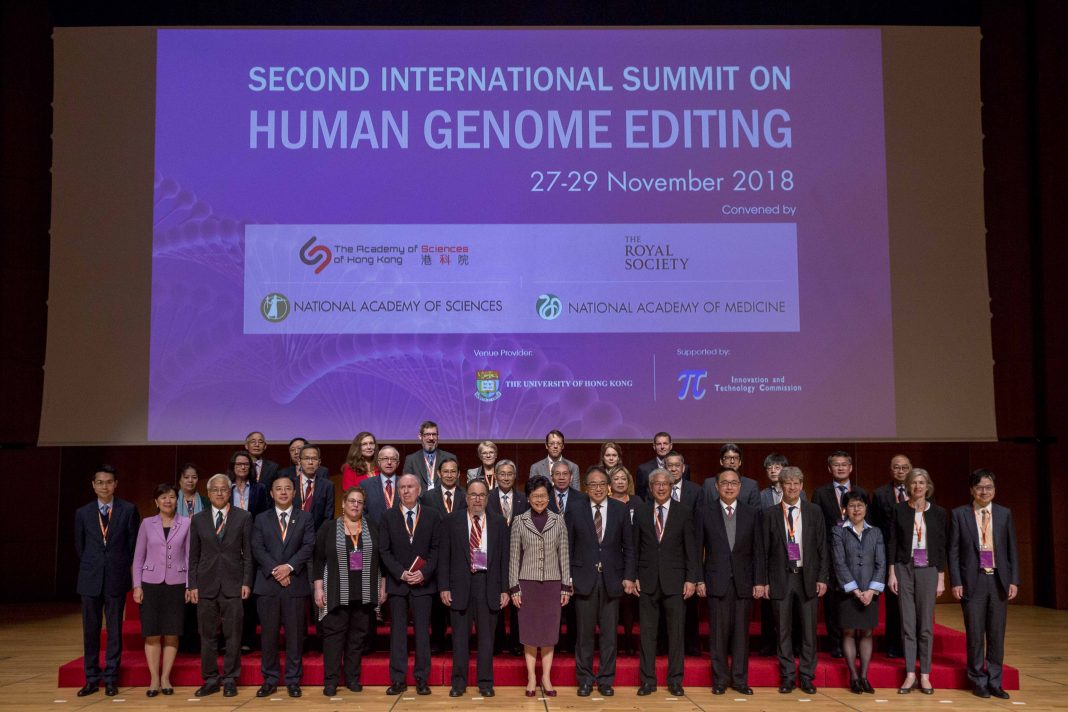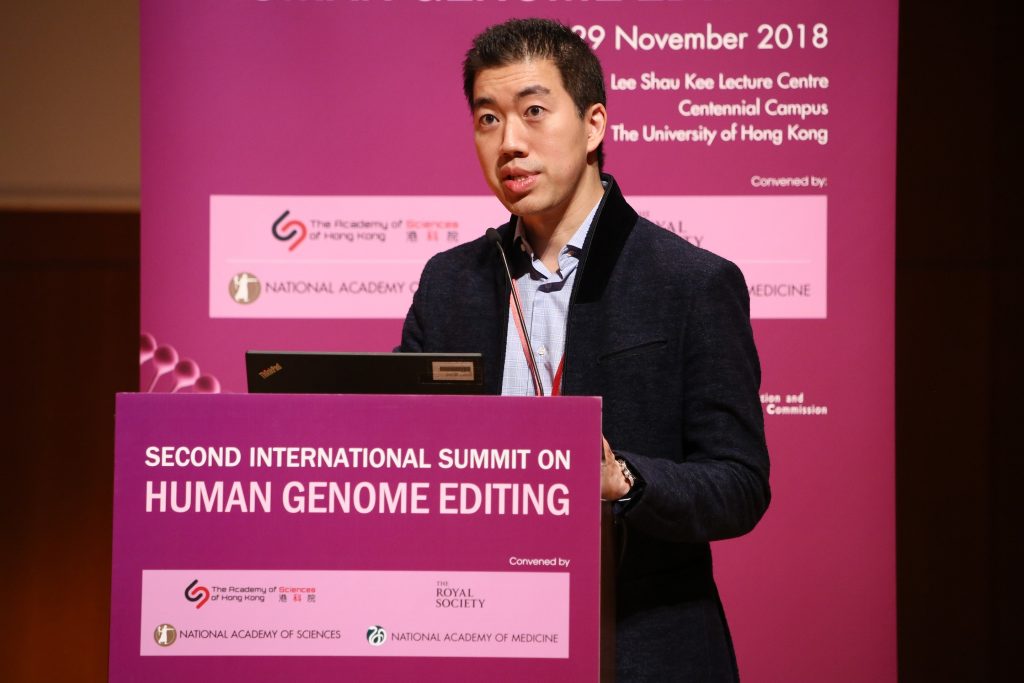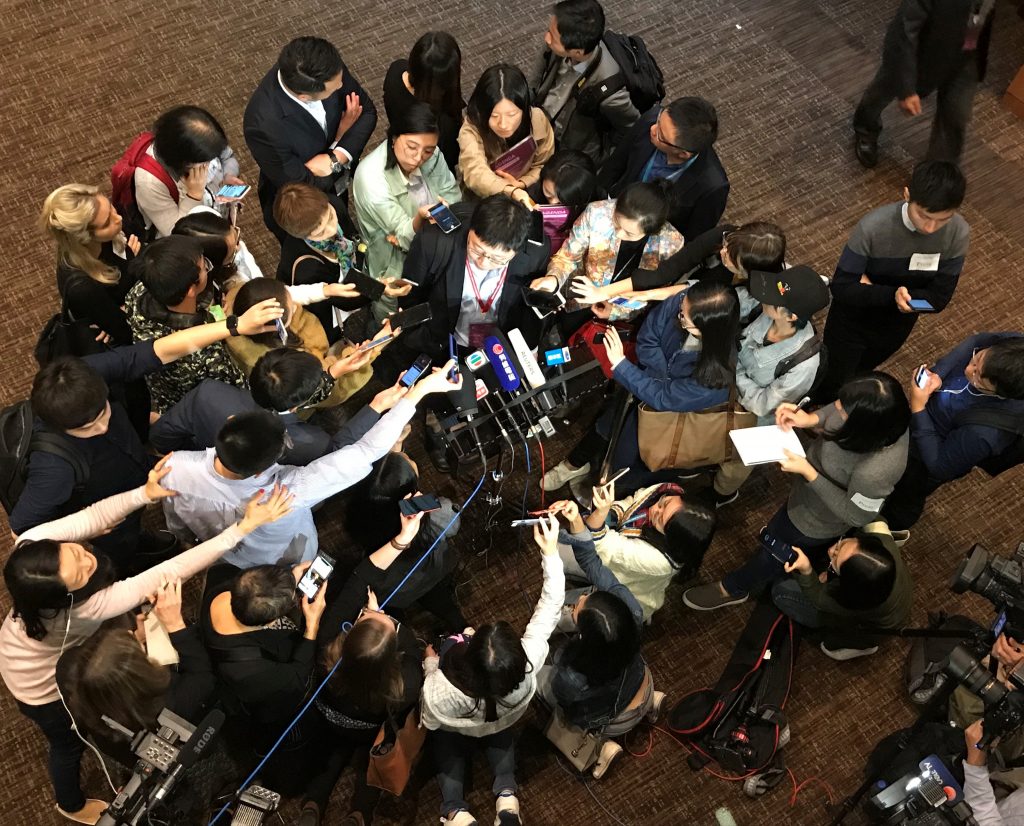
HONG KONG — Under intense scrutiny of the global scientific and even mainstream media, the opening session of the second international Human Genome Editing Summit in Hong Kong took place almost as if nothing sensational had happened. Just 48 hours before the start of the conference, reports surfaced that a group based in Shenzhen, just across the Hong Kong border with mainland China, had performed genome editing on human embryos using CRISPR-Cas9.
The leader of that group, He Jiankui of Southern University of Science and Technology in Shenzhen, is due to speak at the conference on day two, although summit organizers could not confirm his attendance.
Following a report over the weekend in Technology Review, the Associated Press published a lengthy article on the Chinese research study, including the news that one woman was pregnant. He later claimed the birth of twins who underwent germline editing with the uncorroborated aim of disrupting the gene for CCR5, a well-documented cellular receptor for HIV. The goal was to prevent transmission of HIV to the baby.
He’s claims have drawn criticism from many scientists, ethicists, and Chinese officials, who believe the efforts to conduct clinical germline genome editing are premature, may have violated regulatory processes, and in this choice of gene target, are of dubious medical necessity. (See recent commentaries on this from European Bioinformatics Institute director Ewan Birney, and Australian researchers Dimitri Perrin and Gaetan Burgio.)
Implicit Warning
Formally opening the Summit, Nobel Laureate David Baltimore recalled a statement he made at the inaugural genome editing summit, held in Washington DC in 2015, when he drew comparisons to Aldous Huxley’s Brave New World. “Although Huxley could not have conceived of genome engineering,” Baltimore said, “we should take to heart the warning implicit in that book.”
Since 2015, Baltimore said, the science of genome editing has increased rapidly, including the development of new tools, methods to reduce off-target effects, and discussions of ethical and societal implications. “These tools will be used in clinical settings in the future,” he said. “We may even hear about an attempt to apply human genome editing to human embryos.”
Baltimore said the community “must continue to revisit questions” raised at the inaugural genome editing summit in 2015. When will it be justifiable to employ genome editing for therapeutic uses? And under what circumstances can we be prepared to use genome editing for purposes other than for curing disease and alleviating disability?
It wasn’t until the ceremonial speeches and obligatory conference organizer team photo were completed that the conference finally launched. Qui Renzong, a bioethicist from the Chinese Academy of Social Sciences, sharply criticized his compatriot He Jiankui, questioning various aspects of the CRISPR twins report including the approval status of the Institutional Review Board, the possible violation of Chinese Ministry of Health regulations, and the absence of any direct discussion between He and the broader genome editing community.
“Germline modification by genome editing will change the gene pool of the human species,” Qui said. “How could Dr. He not consult other members of the species?” Qui also criticized the choice of the HIV receptor as the target for the germline gene editing trial. “There is a convenient and practical method to prevent HIV infection,” Qui said. “Using genome editing is like ‘shooting a bird with a cannon.’”
Sharing Science
Dana Carroll, a genome editing pioneer from the University of Utah, noted that CRISPR and two other genome editing technologies (ZFNs and TALENs) are being deployed in a variety of preclinical settings, including blood disorders, AIDS, immunotherapy, and various Mendelian disorders.
However, “full realization [of the potential of CRISPR genome editing] will require greater control of the cellular [process] of genome editing than we currently possess,” Carroll said. An example is gene replacement for cystic fibrosis, the molecular basis of which was uncovered 29 years ago (by summit co-host Lap-Chee Tsui). The target tissue (lung) is relatively accessible, but the affected cells are deep in the lung; meanwhile many patients lose pancreatic function.
Carroll also brought up the thorny issue of equitable access to therapy: How will genome editing benefits be made readily available around the world? Most patients affected by sickle-cell anemia or thalassemia live in Africa and Asia. “It is inconceivable that expensive, complex therapies could be made broadly available in high-risk areas. I don’t have any bright ideas on how to achieve this,” said Carroll.
In the afternoon session, genome editing luminaries Feng Zhang, David Liu (both of the Howard Hughes Medical Institute [HHMI]/Broad Institute) and Jennifer Doudna (HHMI/UC Berkeley) gave short presentations summarizing new advances, including base editing and the development of new Cas enzymes that might complement the CRISPR toolbox.

Liu summarized exciting progress over the past few years in base editing, which uses some of the CRISPR machinery to finesse specific base substitutions into genes of interest. Liu said he was “pleasantly surprised” by results from a base editing pilot study attempting to treat a mouse model of progeria, a premature aging disorder caused by a point mutation in the Lamin A gene. Using two adeno-associated viruses (AAVs) to deliver the base-editing machinery, Liu reported up to 60 percent editing of the pathogenic gene variant in the liver, and a corresponding uptick in expression of the corrected RNA and protein.

In a panel discussion, the scientists discussed a range of technical issues that will need to be addressed for successful genome editing, including immune resistance to Cas9 in some individuals and off-target effects. “Most CRISPR enzymes come from pathogenic bacteria we’ve been exposed to and we have pre-existing antibodies,” Doudna said. “That creates a potential problem in a clinical setting.” She said one approach to sidestepping immunity concerns was to investigate Cas enzymes from non-pathogenic bacteria.

As for off-target effects, Liu said his biggest worry is uncontrolled proliferation. “If a cell dies [because of off-target mutation], that’s not as much of a problem…but I would worry if it causes cancer.”
“I’ve had parents of children tell me that they’d gladly trade cancer for Rett syndrome, or Dravet syndrome, or progeria,” Liu said.
On the recurring question regarding equity and access to the technology, speakers gave due credit to the work of the non-profit Addgene, which has helped distribute CRISPR materials around the world for very low cost. But ensuring and improving access of technology advances to researchers around the world remains a thorny issue. Doudna said: “On the technology development side, we’re racing forward with that rather than thinking we ensure widespread access to this later on. It is a challenge.”
Germline Consensus
In the closing session, representatives from seven countries including China, Japan, India, and Singapore discussed current regulations on genome and germline editing. (The U.S. was not represented in this panel as the first Summit took place in Washington, DC and American policies are well documented.) Policies—and penalties for violating said policies—varied considerably, but the one consensus was that germline editing should be banned, at least for the time being. (In statements offered to the press on the CRISPR baby reports, both Doudna and Zhang agreed.)


